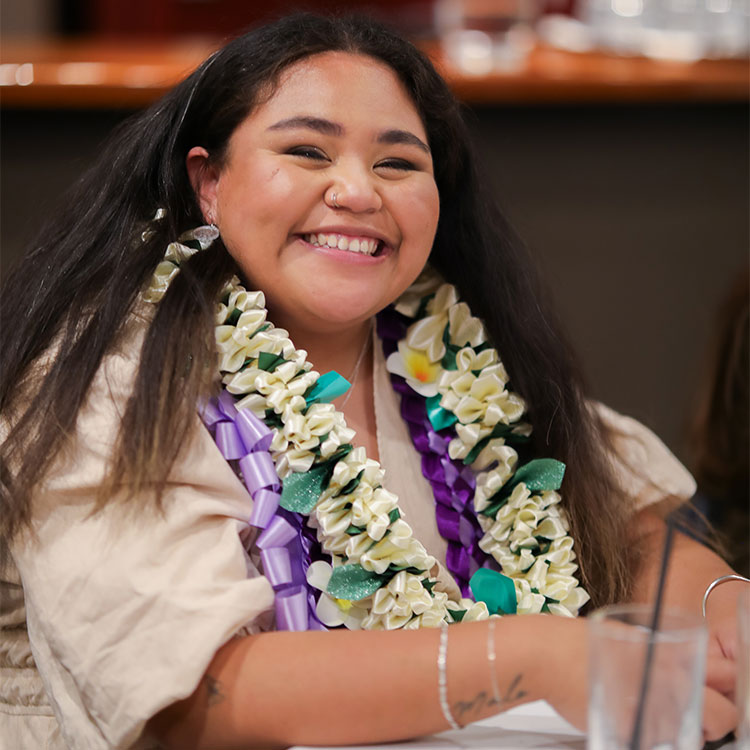
Growing up surrounded by Pacific women, I knew that there was a code of conduct when it came to understanding the value placed on hair maintenance. My late Samoan grandmother’s personal relationship to her hair was as simple as coconut oil raked through waves, secured by a tortoiseshell hair comb. She was never one for flashy adornment, and the only time she added any sense of ceremony was on Sundays at church when she wore the obligatory white hat festooned with ribbons or flowers – tonal, of course.
Hair in Pacific Island communities can convey status, beauty, spirituality and family history. The head in Pacific Island culture is, after all, considered the most sacred part of the body. It’s not restricted to women either; men also understand the value of hair maintenance. In Niuean culture, the ancient ceremony of cutting hair for first born sons is a rite of passage still practiced today.
At a Tongan family funeral earlier this year, it was clear that in a time of mourning, respect for the dead extended to the formal attire required to get through the grief. Sitting along the church pews, rows of Tongan women had their hair ‘done’ in a variety of ways: curls swept into French twists supported by bejewelled hair claws, buns at the nape framed by silk scrunchies, braided waves slicked back and adorned with foam frangipani flowers [sei].
That observation of subtle but powerful personal style partly inspired this shoot, photographed by Geoffrey Matautia and featuring Graycee Tuinukuafe and Katharine Atafu-Mayo aka Katty Mayo. We sought the expertise of curl expert, award-winning stylist and Urban Kurl Studio director Carla Ta’akimoeaka who has developed unique curl-cutting methods for wavy, curly and coily hair that allows those who like to wear their curls straight to return to their natural texture with ease.
Adding to Carla’s hairdos, a range of adornments are employed to reflect the diversity of styles in the Pacific community, and how beautifying hair continues to be both a cultural and personal tool of self-expression and identity.
Graycee Tuinukuafe
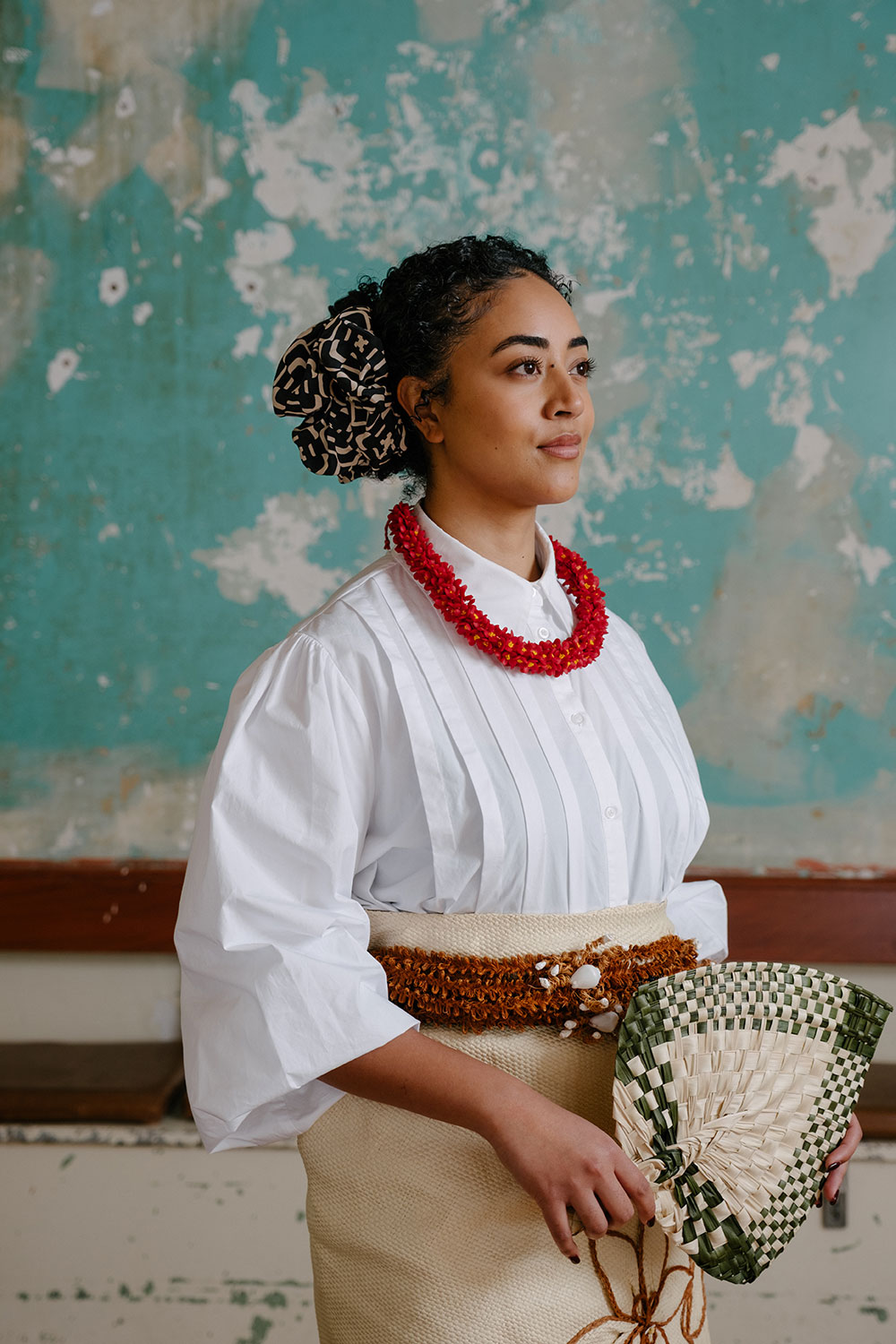
Project manager and business graduate Graycee is also a part-time model, signed to emerging talent agency Luma. Her advice for loving your curls is understanding your curl type and experimenting.
“My earliest memory growing up with curly hair was sitting in front of my mum where she would apply coconut oil and brush and braid my hair. While it was painful at the time, I can now look back on those tightly braided styles with ribbons as a labour of love. What felt like just another morning routine was really my mum preparing me to carry myself with dignity.”
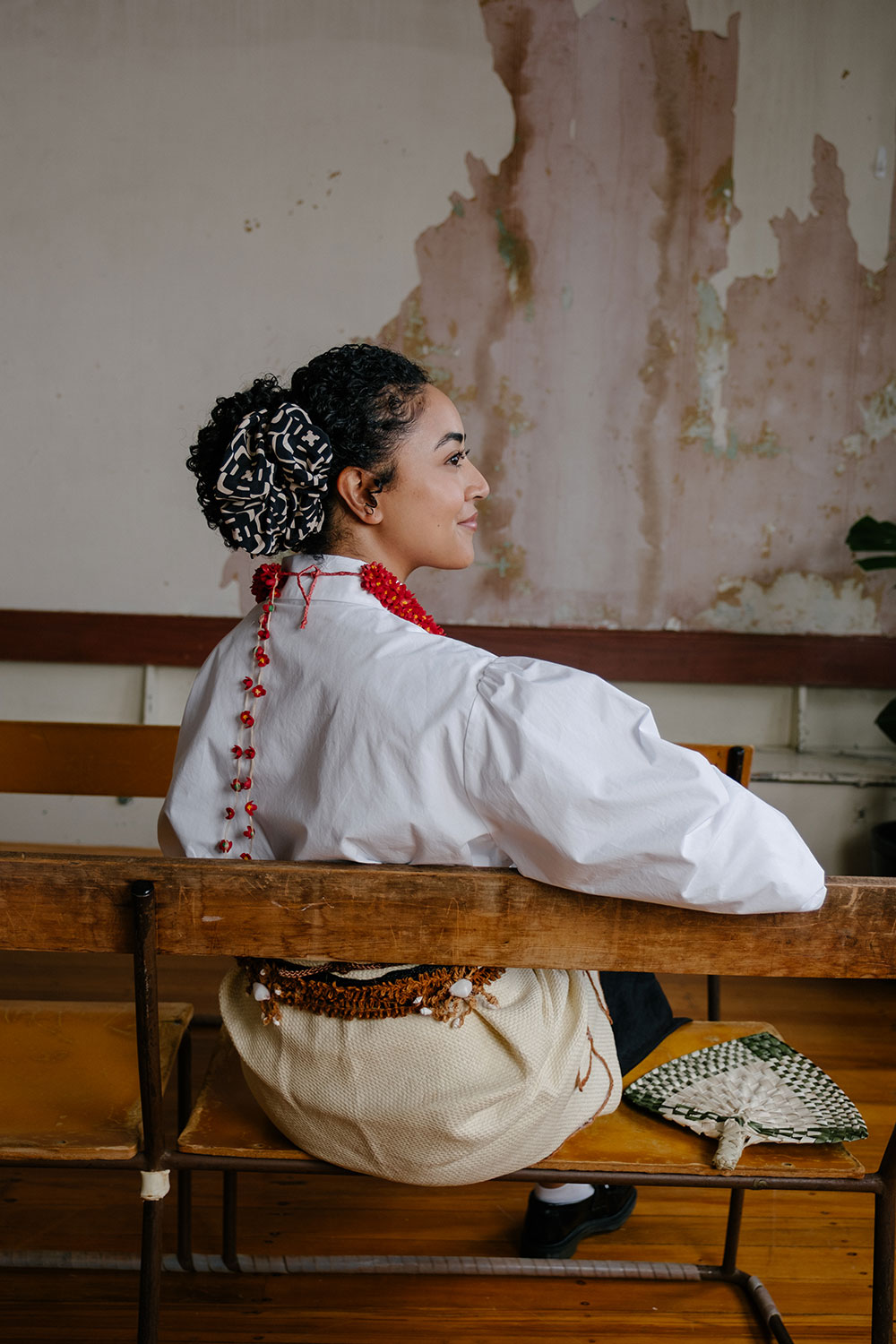
Graycee wears Twenty-seven Names scrunchie, $50. Ruby shirt, $149.
“The kahoa (necklace) is handmade by Salome Kavaliku. The name of the Kahoa is called Pitongalau. It is made up of Tonga’s National flower, the Heilala.
“The Ta'ovala (woven mat) and Kafa (belt) are designed by Malia Koleti Hemaloto. The ta'ovala is worn for formal occasions. This design is of olive leaves which symbolises the olive branch on the Tongan Crest meaning 'Peace and Unity'. The kafa is used to tie and hold the ta'ovala. It is handmade using coconut husk and shells that have been passed down from ancestors.”
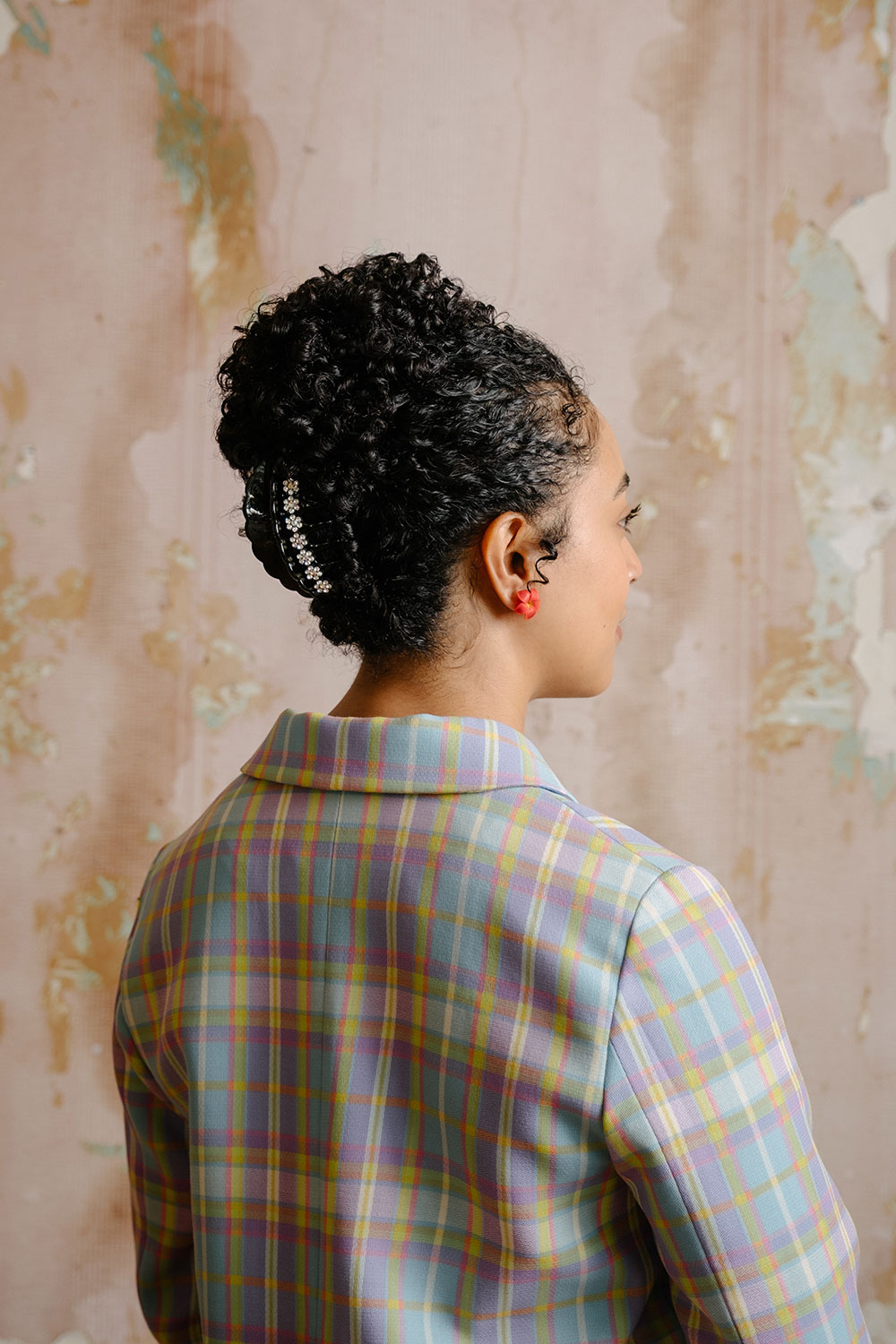

Graycee wears a bejewelled claw clip from Panikeke. Twenty-seven Names jacket, $300 (on sale). Earrings from Janet’s Samoa.
“Embracing my curls has been a journey – one that’s taught me to see them as a reflection of my roots, culture, and individuality. Now, I wear them with pride. What I didn’t expect was how much that choice would mean to the little ones watching. My niece recently told me she wants to wear her hair curly like mine, and I realised that representation starts at home. If my journey helps her love her curls a little more, then it’s all been worth it.”
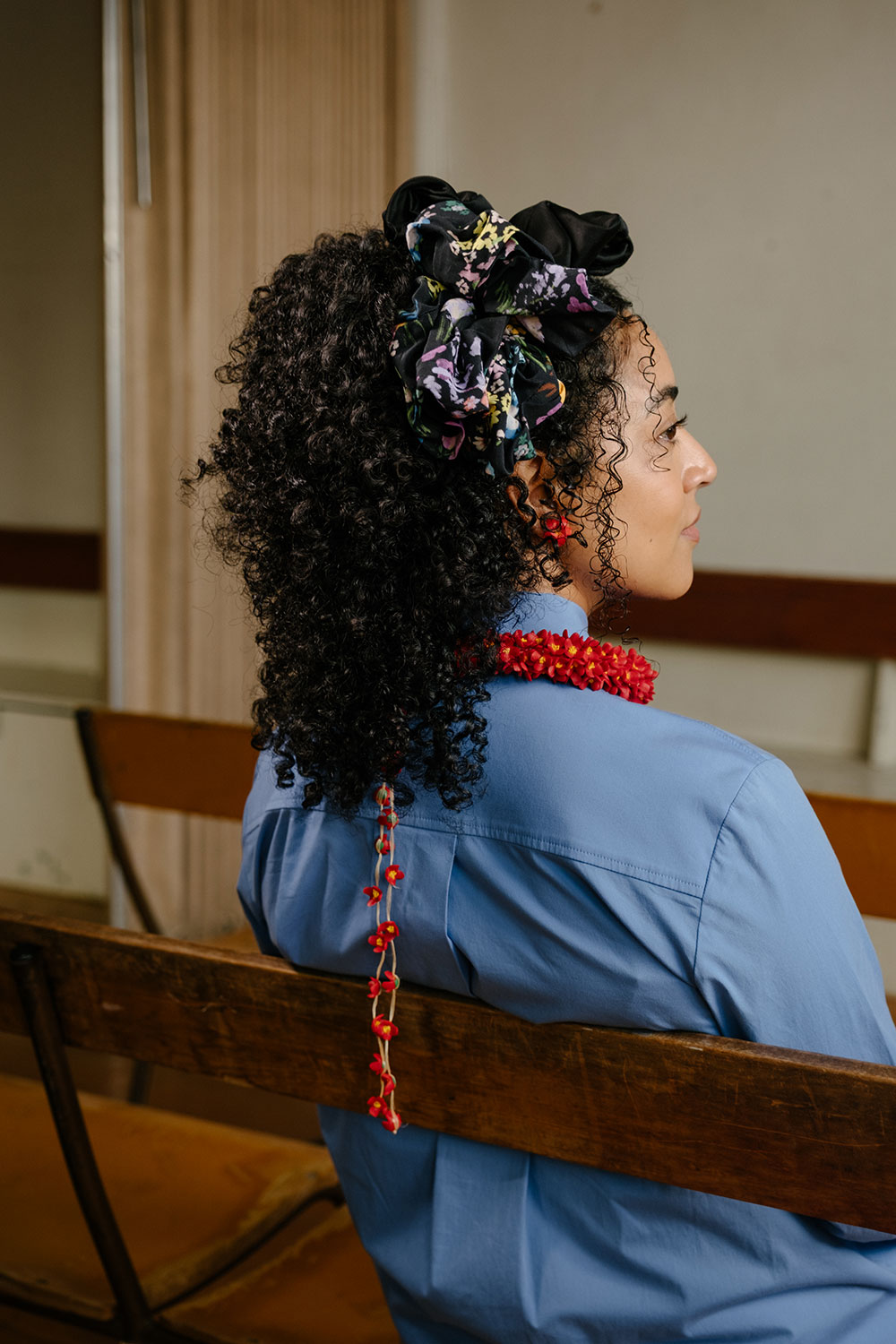
Graycee wears Kowtow scrunchie, $29, and Twenty-seven Names scrunchie, $50. Earrings from Janet’s Samoa. Kahoa (necklace), Graycee’s own. Camilla and Marc shirt, $336 (on sale).
“I get regular curl cuts at Urban Kurl Studio, a hair salon I trust because they truly understand textured hair. On wash days, I use a curl cream and gel, styling with a Denman brush to hydrate, define and bring out the best in my curls. It’s become a part of my self-care and my curls thank me for it every time.
“I’ve learned that faka’apa’apa (respect) extends even to how we treat and present our hair. In Tongan culture hair is sacred – especially in moments of mourning where it is cut as a sign of respect and connection to the person passed. These lessons have taught me to care for my curls with purpose. I think Pacific women love hair adornment and accessories as it’s about expressing versatility, creativity and honouring beauty in all its forms. We can switch it up, show up, and feel seen, on our own terms.”
Katharine Atafu-Mayo aka Katty Mayo
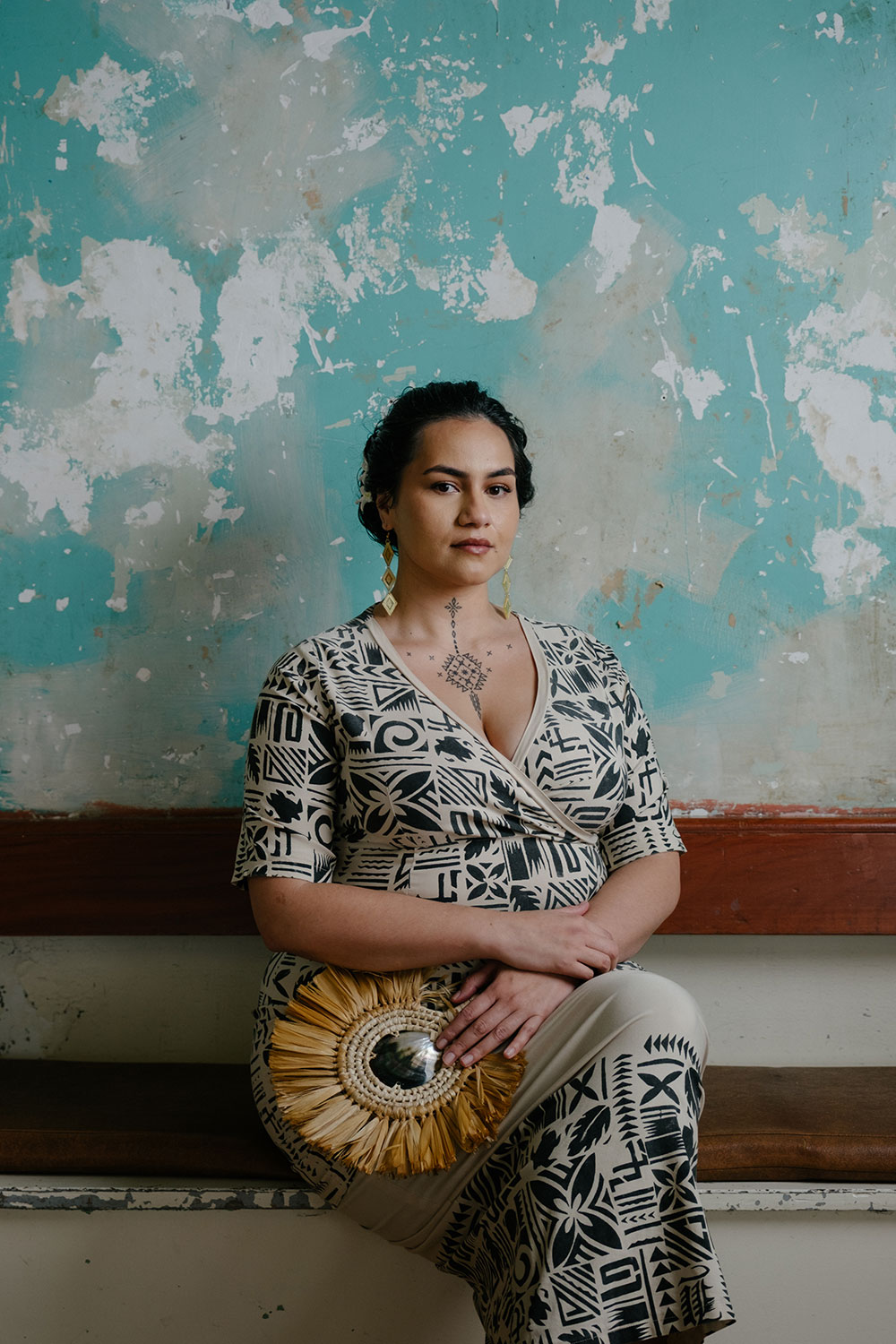
The artist and executive producer for Auckland Pride 2025 knows all about self-expression, exploring her artistry through the ballroom community and in her work as an activation artist and community leader, uplifting underrepresented and emerging creatives along the way. Her Samoan heritage has played a pivotal role in understanding and maintaining her natural hair texture. “Do what works for you and don’t allow people to project their insecurities onto your crown.”
But it is a much deeper relationship to hair and beauty standards that has played a pivotal part in Katty's own relationship to her hair. Five years ago, as part of her graduation exhibition for university, Katty held a ceremonial ritual based on indigenous Samoan practice, shedding her hair as an act of reclamation, a return to pre-missionary Samoa when women would wear their hair shaved or short, free from colonial beauty ideals.
“In the lead-up to this activation, I undertook anapogi, a traditional Samoan practice of fasting and meditation for seven days. Through this, I entered a deep state of reflection and connection, gaining moe manatunatu, spiritual insights and ancestral guidance. I’ve always understood my hair as sacred and have never allowed outside opinions to dictate how I wear or care for it. But this activation marked a deeper shift, where I began to treat my hair as an extension of my spirit and genealogy. The act of cutting it now only feels right when it is spiritually significant. I haven’t cut my hair since that ceremony. It has grown with me, bearing witness to everything I’ve learned and unlearned about myself and my culture.
“I now treat my hair with a deep sense of reverence. It’s no longer just hair, it’s wisdom carried from those who came before me. Because of that, I’m intentional about who I allow to touch or even interact with it. In Samoan culture, the head is considered sacred, and I honour that by protecting my hair’s energy and setting boundaries around it. Only those I trust, who understand the significance and approach it with care are permitted near it.
“This sacred relationship has grounded me in who I am. It’s taught me to listen more closely to my body, to honour cycles of growth, shedding and rest, and to carry myself with the quiet strength of my ancestors. My hair is a living archive of my becoming and every curl, coil, baby hair, frizz and strand holds story, memory and mana.”
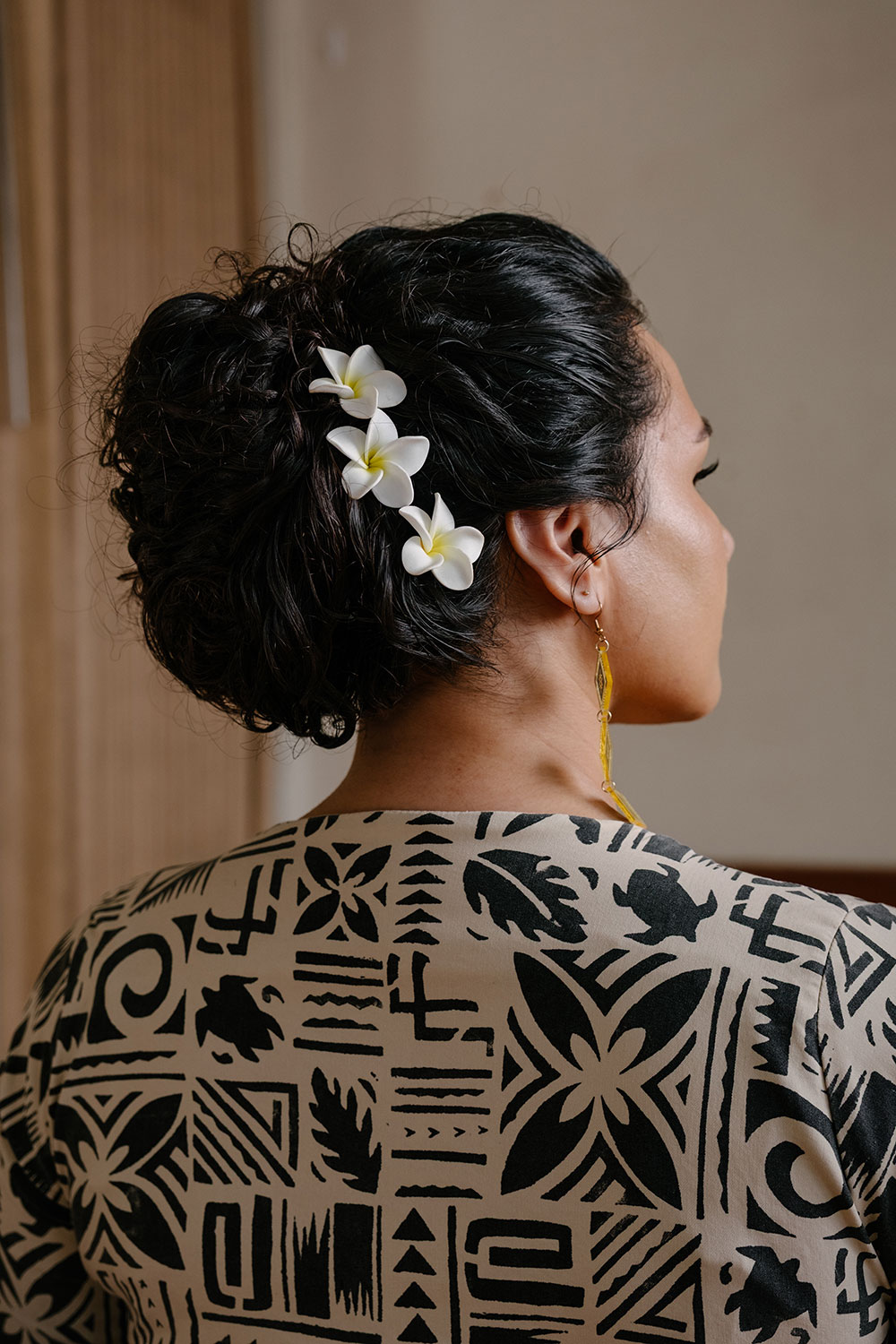
Katty wears a Loralei Samoa frangipani sei (set of three). Loriana’s Puletasi set and Katty’s own earrings.
“Some of my earliest and most cherished memories around hair come from the women in my family. My Grandma Lani would wash my hair with Herbal Essences, and while she did, she would sing to me. There was something so gentle and loving about those moments, the scent of the shampoo, the sound of her voice and the way it made me feel held and cared for.
“My mother had her own way of caring for my curls too. At night, she would plait my hair before bed as a protective style. It became part of our nightly rhythm, a quiet act of love and protection that taught me early on that my hair needed intention and care. Don’t get me wrong, I was definitely on the receiving end of the harsh brush-throughs too. But honestly, that kind of brushing and different styles that my mum would try out on me probably explains why I’m not tender-headed to this day.”
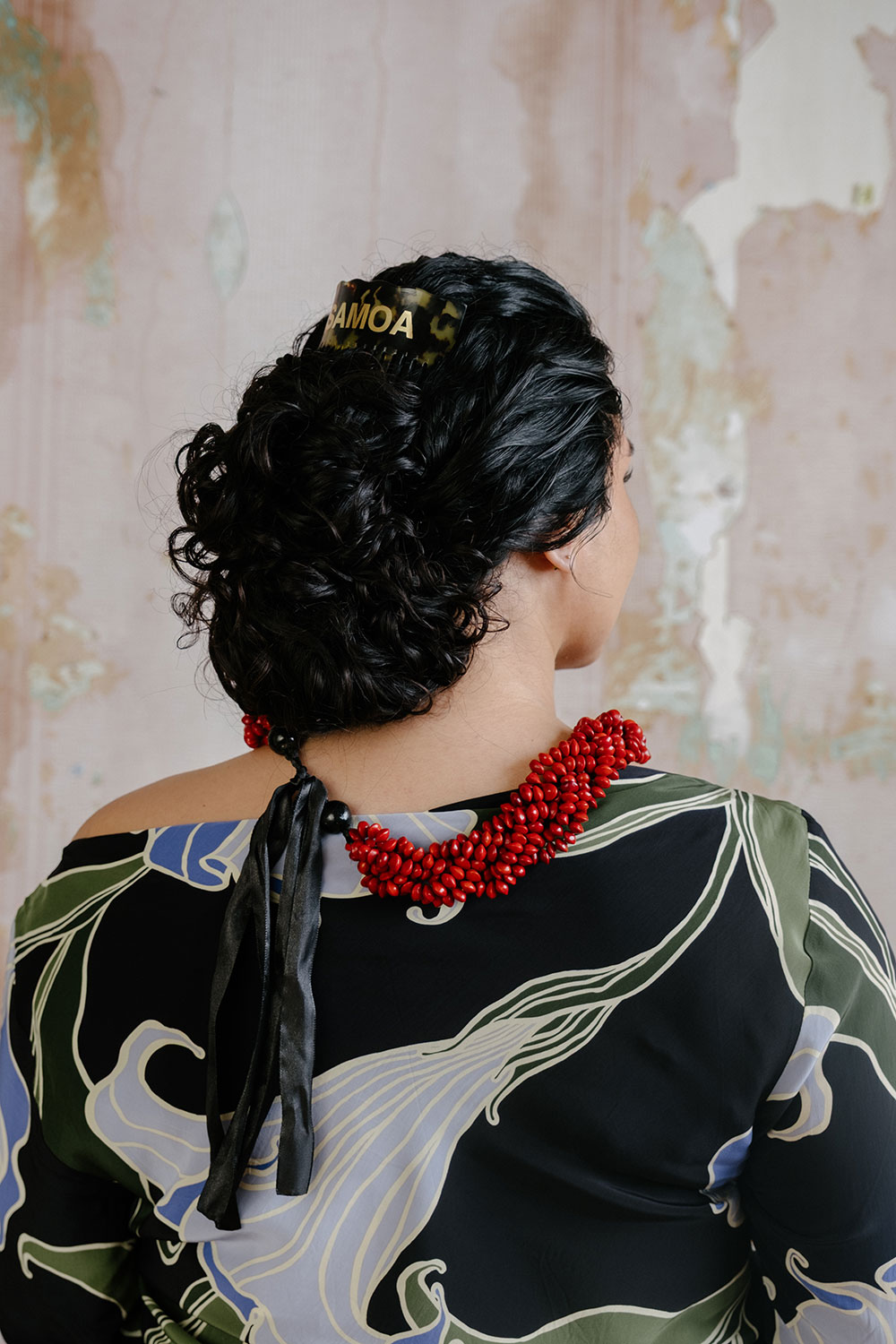
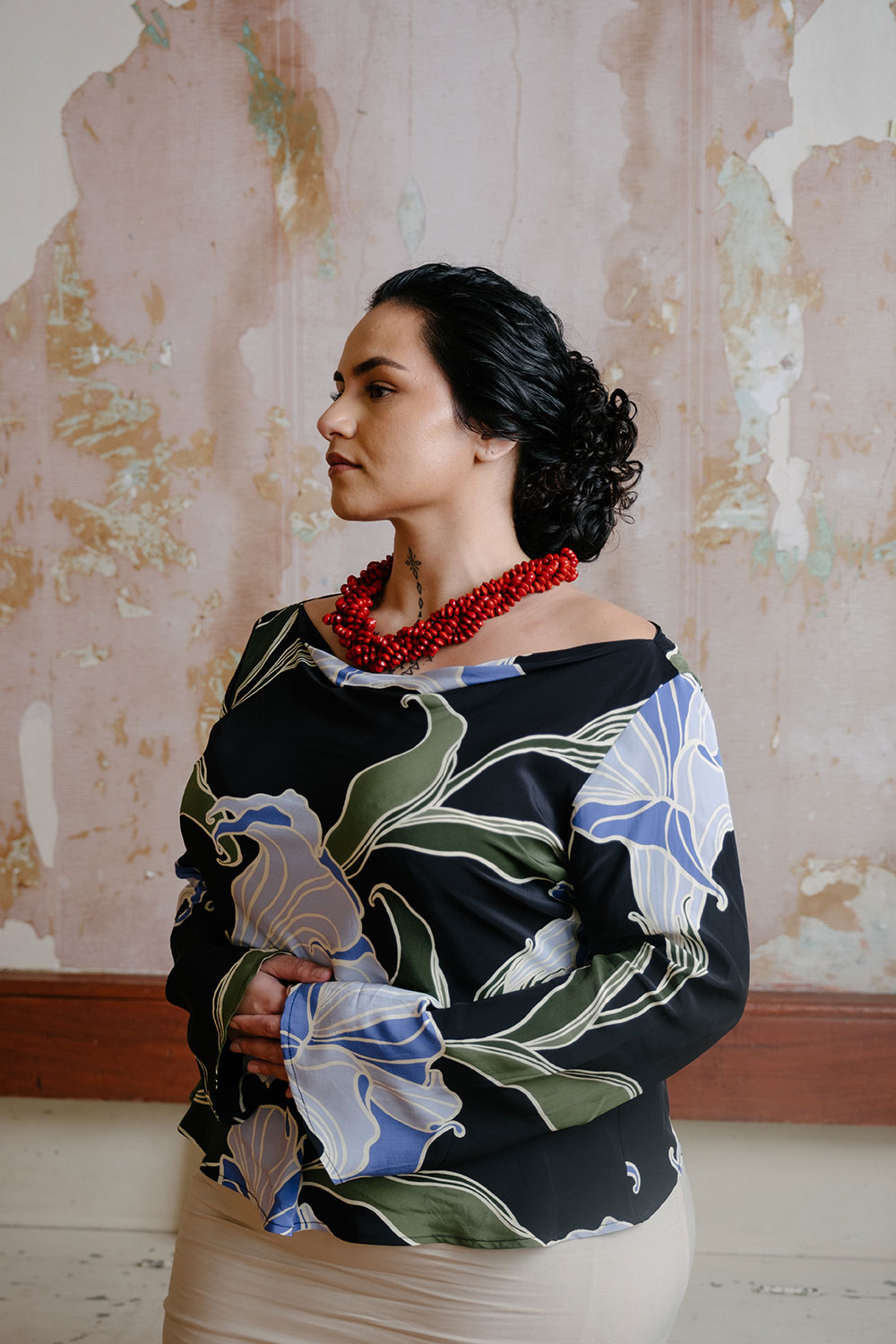
Samoa hair comb, $30 and necklace, $50, from Otara Market. Ruby top, $219.
“In Samoa, our head is regarded as the most sacred part of the body, a belief deeply rooted in our indigenous culture. It is not just where our thoughts and consciousness reside, but a beacon for the divine connection between us and the spiritual realm. Our hair, as an extension of this sacred space, carries with it the weight of our ancestors' wisdom and strength.
“Regardless of curl pattern, texture, frizz or whether or not it’s been styled, to me hair transcends mere appearance; it embodies resilience, pride, and the sacred connection held with the divine. My crown is an extension of my spirit, a manifestation of self determination and a reminder that how I choose to present myself is a sacred act, rooted in the deep knowledge that I am enough, just as I am.”

Katty wears a Ruby hairpin, $25. Rosa’s Pearls earrings. Pinstripe shirt and tapa sei [flower], Katty’s own.
“I don’t follow a super strict routine. I do try to massage unrefined coconut oil into my scalp once a week, especially during the summer since it can act as a protectant. I only brush my hair with a curl define brush while it’s wet, and I make sure to wear protective styles to sleep or use a silk bonnet.
“Lately, Umberto Giannini and Clever Curl products have been working really well for when I want my curls to be styled. One thing I do every day, though, is speak love and life into my hair. Whenever I work with her in any way, I say affirmations. It’s my way of nurturing not just my curls, but the energy, the memories and the stories they hold as the physical manifestation of my crown. She carries my lineage, my softness, my power, and the phases I’ve moved through. So tending to her is never just about appearance, it’s a ritual of reverence.”
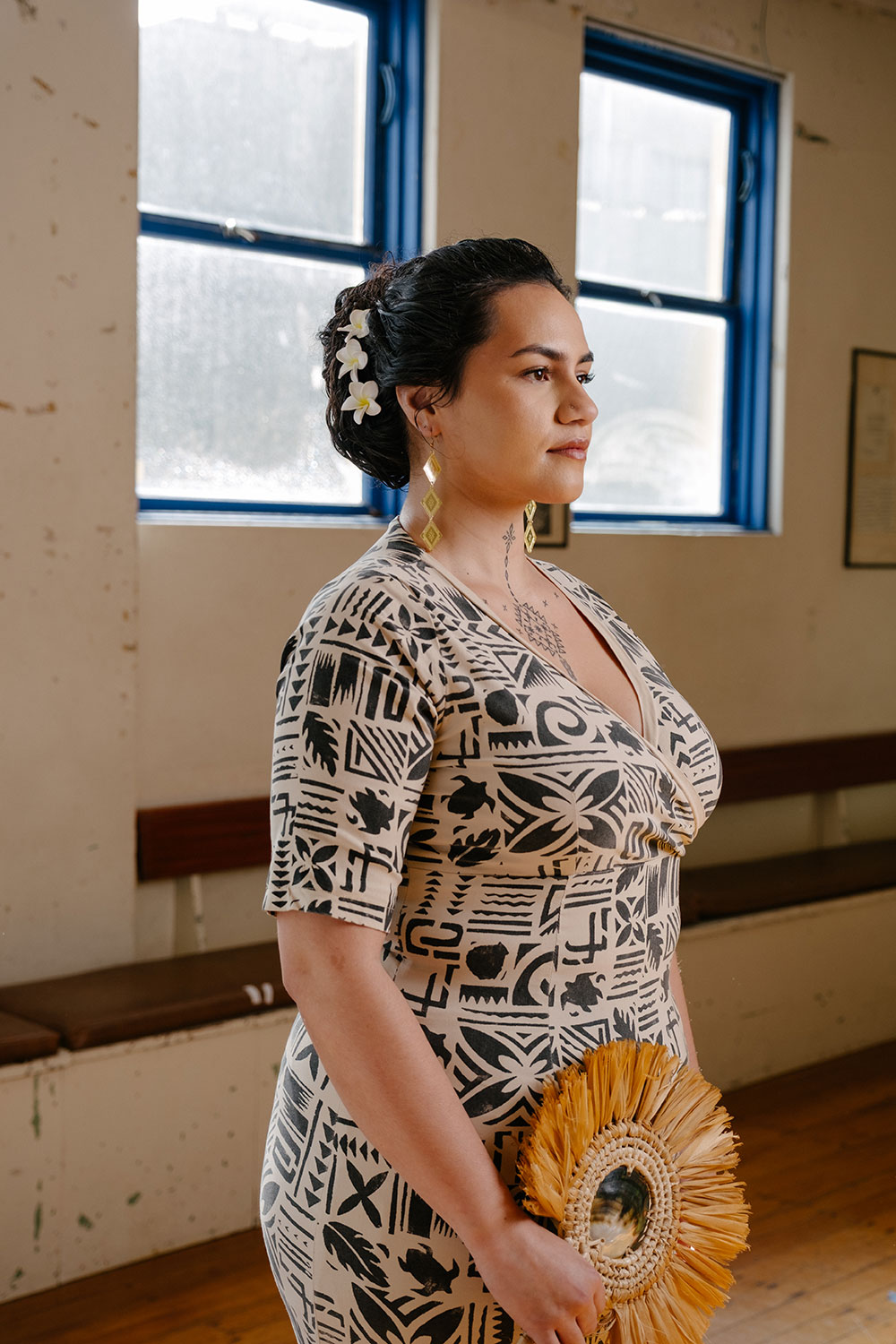
When it comes to hair adornment, Katty shares some of the pieces that have helped celebrate her crown.
“Hair adornment throughout Te Moana Nui a Kiwa and beyond is a powerful form of storytelling. Our measina, or adornments, can symbolise roles, ceremony, ritual, resilience and the wisdom passed down through generations. Every element, from the materials used to the way they are worn, reinforces a deeper narrative of love, collective strength, beauty, connection to our natural environment and acknowledgment of our culture and ancestors.
“Adorning our crown has been a practice that has existed in our gafa and history since pre contact; I think about sei, pale fuiono, selu tuāniu and tuiga fau. It’s natural that as people of Te Moana nui a Kiwa, we gravitate towards these practices that are still well and alive today.
“Currently, my favourite hair adornment is the Palestinian keffiyeh. The keffiyeh represents resilience, perseverance, resistance; values that resonate deeply with me as a Samoan woman. It aligns with the spirit of our culture: standing firm and proudly in the face of adversity.
“Just as our measina [treasures] express our identity, strength and stories, the keffiyeh carries its own powerful narrative. One that holds symbolism of Palestinians' connection to land, sea, people and their strength in collectivism. Although I wear my keffiyeh in many ways, wrapping it around my head is my favourite. This represents my ongoing solidarity to stand with Palestinians fighting for their lives, their land, their people, their rights and their liberation. #FreePalestine.”
-
Photography / Geoffery Matautia
Creative director / Dan Ahwa
Hair / Carla Ta’akimoeaka from Urban Kurl Studio
Hair assistants / Josephina Moaga and Pandora Afa
Photographer’s assistant / Peter Wing Seeto
Shoot assistant / Simorina Potoi
Katty’s makeup / Ashley Southgate



